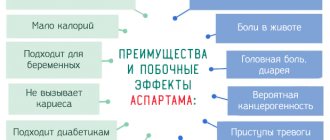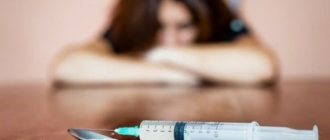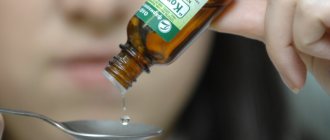People have conflicting opinions about the benefits of glucose. Some argue that it has a harmful effect, leading to obesity, while others are unable to live even one day without the sweet “pill.” But from a scientific point of view, glucose plays an important function for the body. For all tissue cells it is the predominant source of energy, and for red blood cells it is even the only one.
What benefits does glucose bring to the body?
Glucose should always be present in human blood. Daily food delivers it to our body. Absorbed by the digestive system, food is broken down into fats, proteins and complex carbohydrates. Carbohydrates are in turn divided into glucose and fructose. Glucose, entering the blood, is carried by it to all cells of human tissues and important organs.
It is necessary to list in order what useful actions it performs:
- takes part in important metabolic processes. Glucose is the most easily digestible energy resource: it has half the calories and oxidizes much faster than all other energy sources. If glucose deficiency occurs, a person feels unwell, weak and drowsy;
- acts as the main source of energy. By receiving glucose, an overworked person quickly restores his capacity. The unspent part of glucose is converted into glycogen, which reserves it in the muscles and liver. During a glucose deficiency, the liver supplies the body’s cells with it, providing energy and maintaining performance;
- stimulates the heart. Glucose has a positive effect on the cardiac system, so it is used for cardiac decompensation;
- used for medicinal purposes to treat many diseases, hypoglycemia and intoxication of the body. Glucose is found in many anti-shock medications and blood substitutes used for diseases of the central nervous system, liver, various infections and intoxications;
- provides nutrition to the brain. Glucose is the main food for the brain, since it can only use energy from carbohydrates. With a lack of glucose in the blood, the state of health worsens, the person becomes lethargic and unfocused;
- quickly eliminates the feeling of hunger. Hunger occurs when the body lacks nutrients. This may be due to the disorganization of carbohydrate metabolism that occurs with an unbalanced diet. Excessive nutrition leads to a loss of sensitivity of muscle tissue to insulin, while the utilization of glucose by the muscles is impaired and hunger increases. When glucose is supplied, the feeling of hunger goes away and the person feels much better;
- relieves stress. Glucose, entering the blood, corrects the mental state, providing inner peace and a sense of stability.
Ascorbic acid consumption rate
To maximize the benefits of the vitamin, you must follow the correct dosage (if taken in synthetic form). It must be strictly regulated. Ascorbic acid is taken either orally or intramuscularly.
Daily doses of the drug for medicinal purposes (in tablets or dragees):
- adults – 50-150 mg;
- children under six months – 30 mg;
- 6-12 months – 35 mg;
- 1-3 years – 40 mg;
- 4-10 years – 45 mg;
- 11-14 years – 50 mg.
Vitamin solutions for injection are prescribed in a dosage of 1-3 ml (5%) for adults, and 0.6-1 ml for children.
The norm of ascorbic acid as a prophylactic agent:
The daily dose for an adult should not exceed 1 g, for a child – 0.5 g.
Harmful effects of glucose on the body
Glucose can bring not only benefits to the body, but also harm. Patients with metabolic disorders and people of advanced age, when the metabolic process is already slowing down, should not eat foods containing excessive amounts of carbohydrates without measure. Excess glucose can lead to the following undesirable consequences:
- the appearance of fat deposits and weight gain;
- metabolic disorders and overload of the pancreas (this can stop the process of insulin production);
- an increase in cholesterol levels in the blood, which can lead to atherosclerosis;
- development of thrombophlebitis;
- the occurrence of allergic reactions.
The delivery of glucose to the body must be compensated by the expenditure of calories for energy needs. People who have problems with metabolic functions and are inactive should especially monitor their blood glucose levels.
Sugar can be poisonous too
Regular sugar is poison if its consumption is excessive. Poisoning can be caused not only by a sweet substance, but also by harmful microorganisms that multiply well in confectionery products. If you treat yourself to a sweet cake with fluffy cream, you may encounter an infection.
The symptoms of sugar poisoning are quite specific and easy to identify:
- increased excitability is noticeable, which after a while gives way to aggression;
- there is pain in the stomach area;
- There may be nausea and vomiting;
- the person is tormented by severe thirst, but urination is impaired.
If a person remains alive after severe poisoning from sweets, then his pancreas is depleted, which is why diabetes develops over time.
The body activates all resources to digest the shock amount of sweets, due to which the functioning of the stomach and intestines is disrupted.
Normal glucose level
The acceptable level of glucose in the blood is 3.4–6.2 mmol/liter. With a deficiency or excess, serious disorders in the body can occur.
If there is an excess of glucose, the body produces more and more insulin to absorb it. Under such conditions, the pancreas works under heavy loads, becomes depleted, and diabetes mellitus may occur. Excess glucose is transformed into fat cells and triglycerides are produced from it, which, like cholesterol, provoke the development of coronary disease, hypertension, and atherosclerosis. Body weight increases, the metabolic process fails, and immunity fades.
Glucose provides nutrition for the brain; its deficiency leads to weakening of the body. If the glucose level drops significantly and becomes half as much, fainting may occur.
Carbohydrates entering the body are broken down into sugar derivatives, including glucose. The blood sugar level actively increases when eating and the pancreas begins to produce insulin in large quantities. It transforms glucose into muscle tissue, normalizing sugar levels. When insulin levels are exceeded, this leads to a lack of glucose. This is how hypoglycemia occurs.
Blood glucose should be at the appropriate level. Deviations lead to a malfunction of the endocrine system and metabolic processes. If any function is impaired, serious illnesses can occur.
Glucose is a natural monosaccharide, otherwise called grape sugar . Contained in some berries and fruits. A large amount of the substance is included in grape juice, which is where its name comes from. How is glucose useful for humans, what significance does it have for health?
Are IVs used?
What else can this medicine be used for? If there are no contraindications, then use in a dropper is justified. The description of the drug allows you to understand in what situations a glucose dropper may be applicable.
- Isotonic dehydration of the body (dehydration);
- Tendency to hemorrhages in childhood (hemorrhagic diathesis);
- Correction of water and electrolyte disturbances during coma (hypoglycemic) as part of complex therapy or as the main method of treatment at the prehospital stage of care;
- Poisoning of any origin.
To understand how to take glucose in a particular case, you should familiarize yourself with its composition, indications and contraindications. Instructions for use will provide answers to these questions. A glucose drip is often used for people suffering from alcoholism or other causes of severe liver damage. Why is glucose dripped in this case? The answer is simple. It replenishes energy reserves, since the liver in these diseases cannot cope with this task.
Glucose ampoules contain 5 or 10 ml of dissolved compound. The intravenous system requires the use of vials with this substance.
FOOTNOTE! It is important to remember that ampoules and bottles of glucose should be stored in cool conditions, preferably without access to children.
Importance for the body
Glucose is a colorless substance with a sweet taste that can dissolve in water. Penetrating into the stomach, it is broken down into fructose. Glucose in the human body is needed to carry out photochemical reactions : it transfers energy to cells and participates in the metabolic process.
Useful properties of the crystalline substance:
- promotes the smooth functioning of cellular structures;
- entering cells, the monosaccharide enriches them with energy, stimulates intracellular interactions, resulting in oxidation and biochemical reactions.
The element is capable of being independently synthesized in the body . Medical products are made on the basis of simple carbohydrates and are intended to replenish its deficiency in the body.
Release form
Grape sugar is produced in different forms:
- In tablet form. Glucose tablets are useful for improving overall well-being, increasing physical and mental abilities .
- In the form of a solution for placing droppers. Used to normalize water-salt and acid-base balance.
- In solution for intravenous injection. Used to increase osmotic pressure, as a diuretic and vasodilator.
Opinions about grape sugar are controversial. Some argue that the substance provokes obesity, others consider it a source of energy, without which a healthy person cannot do a day. What are the benefits and harms of glucose for the body?
Signs of overdose
For a healthy person, an amount of glucose that is 4 times higher than the daily norm is dangerous. Consuming such large amounts of sugar and sugar-containing foods may cause vomiting and diarrhea, accompanied by bloating.
For people suffering from diabetes, an overdose of glucose is fraught with various kinds of complications. The symptoms are very pronounced, so diabetics can easily identify an approaching coma by the following signs:
- dry mouth and severe thirst;
- frequent urination;
- fatigue;
- blurred vision and consciousness;
- itchy skin;
- arrhythmia.
These are immediate symptoms that occur in isolated cases of glucose overdose. For diabetics, an increase in blood sugar levels is dangerous because their disease will progress with even greater complications (difficult wound healing, bone porosity, risk of trophic ulcers, paroxysmal pain in the limbs, blurred vision, increased cholesterol).
Benefit
The substance must always be present in the human circulatory system . Simple carbohydrates penetrate into the internal organs along with food.
Dissolving in the digestive tract, food decomposes into fats, protein compounds and carbohydrates. The latter, in turn, are broken down into glucose and fructose, which, penetrating the bloodstream, spread throughout the cells and internal organs.
The product has positive properties:
- participates in metabolic processes. With its deficiency, people feel malaise, loss of strength and drowsiness;
- is the main source of energy . By taking a small amount of glucose-containing food, you can restore strength;
- normalizes heart function;
- used for medical purposes in the treatment of many diseases: hypoglycemia, poisoning, brain pathologies, liver diseases, infectious diseases;
- nourishes the brain. This monosaccharide is the main food for the brain. With its deficiency, deterioration of mental abilities and difficulties with concentration may occur;
- satisfies the feeling of hunger;
- relieves stress.
Carbohydrates can correct the psycho-emotional state, improve mood and calm the nervous system.
Glucose can harm the body. Patients with metabolic disorders, as well as older people, should not abuse foods containing large amounts of carbohydrates. An excess of a substance can lead to negative consequences:
- the occurrence of fat deposits, obesity;
- metabolic disorder;
- disruption of the pancreas, which, in turn, negatively affects the synthesis of insulin;
- increased amount of cholesterol in the blood, atherosclerosis;
- the formation of blood clots;
- the appearance of allergic reactions.
Norm and consequences of deviation
The required level of glucose in the body is 3.4-6.2 mmol/l . Any deviation from acceptable limits may result in severe disorders.
With a deficiency of insulin, a hormone produced by the pancreas, the substance is not absorbed in the body, does not penetrate the cells and is concentrated in the circulatory system. This leads to starvation of cellular structures and their death. This condition is a serious pathology, and in medicine is called diabetes mellitus.
With an unbalanced diet, long-term diets, as well as under the influence of certain diseases, a person’s blood sugar level may decrease. This threatens the deterioration of mental abilities, anemia, and the development of hypoglycemia. Lack of sugar negatively affects the functioning of the brain and also adversely affects the functioning of the entire body.
An excess of monosaccharide is fraught with the development of diabetes mellitus, damage to the nervous system and visual organs.
Excess substances, penetrating into the bloodstream, negatively affect blood vessels, which entails a deterioration in the functions of vital organs. Subsequently, this can lead to atherosclerosis, heart failure, blindness, and kidney pathology.
That is why you should consume glucose-containing foods within the permissible norm .
The daily glucose requirement is calculated based on the patient’s weight: a person weighing 70 kg needs 182 g of the substance. To calculate your need for sugar, you need to multiply your body weight by 2.6.
Indications for use
Glucose solution is indicated for use in the following cases:
- state of hypoglycemia (decrease in blood glucose levels below normal);
- intoxication with various poisons and narcotic substances;
- as part of additional nutrition (after various types of pathologies);
- hemorrhagic diathesis;
- state after shock;
- liver dystrophy;
- collapse (sharp drop in blood pressure to critical levels);
- disturbances in the functioning of vital organs;
- dehydration of the body;
- infectious intestinal diseases;
- pulmonary edema;
- cardiac decompensation;
- hepatitis;
- dilution of various medications before their administration by injection.
Who is prescribed
In some cases, additional glucose intake is required. Most often, experts prescribe the drug in tablets for poor nutrition . In addition, it is used:
- during pregnancy, with insufficient fetal weight;
- during intoxication with narcotic and chemical drugs;
- with a hypertensive crisis, a strong drop in blood pressure, as well as deterioration of the blood supply to certain organs;
- to restore the body after poisoning and dehydration resulting from diarrhea and vomiting;
- during the recovery period after operations;
- when the amount of sugar in the blood drops, hypoglycemia, diabetes mellitus;
- for liver pathologies, intestinal infections, increased bleeding;
- after prolonged infectious diseases.
Ascorbic acid with glucose is especially useful for a growing organism. A deficiency of the product during the active growth of children can lead to skeletal muscle dystrophy and tooth decay.
In addition, the use of tablets will help replenish lost vitamin C in smokers who lose it during smoking.
What you should know before using ascorbic acid
Taking the drug depends on certain factors. You cannot prescribe ascorbic acid on your own without first consulting your doctor. It is better to buy the product in large, trusted pharmacy chains so as not to fall for a fake. Unfortunately, there are a lot of fake medicines on the shelves.
It is better to take the vitamin after meals. To ensure that the product is absorbed faster, drink it with plenty of water. It is necessary to avoid taking medications that are incompatible with ascorbic acid.
Ascorbic acid is a substance essential for the body, without which many processes are impossible. It is not synthesized in the body, so it must receive it from the outside. It is better if it is the use of products containing ascorbic acid. But if there is a shortage of such products, you can resort to taking pharmaceutical forms of vitamin C. The main thing is to follow the correct dosage and take into account all contraindications.
Ascorbic acid
What is glucose and what is it for?
Glucose is the simplest monosaccharide among carbohydrates, having 1 sugar molecule. Other monosaccharides include:
Glucose literally translated from Greek means “sweet.” In other words, it is also called dextrose or grape sugar. In nature, glucose is found in the juice of fruits and berries. The benefit of the substance lies in the fact that glucose is also considered the main product of photosynthesis.
The molecule that is part of dextrose is part of the so-called complex sugars:
- polysaccharides (cellulose, glycogen, starch);
- disaccharides (lactose, maltose, sucrose).
Glucose is the end product of the breakdown (hydrolysis) of basic complex sugars. In particular, disaccharides that enter the stomach break down into fructose and glucose.
The following properties are distinguished:
- crystalline substance;
- lack of pronounced color and smell;
- presence of sweet taste;
- solubility in water.
The beneficial properties of glucose are to provide the energy needed by the body. This beneficial property is also observed in fats and glucose in the form of carbohydrates. The component is contained in the following groups of useful products:
- bread products;
- fruits;
- vegetables;
- milk products.
The benefits of sugar are obvious. Harm occurs when an excess amount of a substance enters the body.
Glucose poisoning in children: why and when to give glucose?
Intoxication in children of different age groups can occur due to the fact that they have eaten foods of poor quality that contain toxic microelements.
Innovative diagnostic methods are able to establish with almost one hundred percent certainty the cause of intoxication, for which therapy is often complex.
For all kinds of poisoning in children, glucose is used in all cases to improve the quality and effectiveness of therapeutic effects.
Epidemiology of childhood intoxications
The main reason for such processes in the baby’s body is the consumption of a product contaminated with various poisons, pathogenic bacteria or other substances that are harmful, which can be combined into one category of toxic infections of a food nature.
The baby’s body is still very far from perfect, and therefore intoxication in them is always much more severe than in adults, and all because their internal reserves are used up much faster and irrationally. This happens because organs that have not yet developed to the required extent are not ready for such an aggressive toxic attack.
Judge for yourself: the immune system and defense mechanisms are poorly developed, intestinal bacteria are not functionally controlled with their goals, gastric juice is not active to the extent required. Both children and adults can eat the same dish, but only the child will be poisoned.
https://www.youtube.com/watch?v=rd6QwXLdOpo
In total, there is a triad of intoxication stages:
- Latent, progressing from the moment a harmful substance enters the baby’s body until the appearance of primary symptoms.
It depends directly on the general condition of the child’s body and the longitude can be very diverse. - Clinical, in which all signs of intoxication are expressed especially clearly.
- Stage of retreat of the disease.
Consequences of poisoning: what to feed children if poisoned?
A timely diagnosis by a specialist guarantees the fastest and most effective intoxication therapy, in which glucose is the basic remedy.
The doctor will begin to figure out the course of treatment after he identifies and analyzes the symptoms of intoxication found in the baby.
Here are the most typical of them:
- diarrhea;
- general lethargy and severe fatigue;
- diarrhea;
- painful sensations in the stomach area;
- a sharp rise in temperature to 38 degrees.
These signs can be manifested either in a single copy or as a whole “bouquet”, which is directly dependent on the age category of the child, the state of his body and the individual tolerance of the poisonous substance.
All children, without exception, are prescribed glucose by specialists due to its extreme effectiveness, due to its original properties.
A glucose molecule is the smallest particle into which only all produced carbohydrates can be broken down.
It is easily digestible by the child’s body, is most adequate energetically and penetrates into all sorts of metabolic processes with amazing ease.
Glucose, therefore, is an energy metabolic base, the deficiency of which can negatively affect the individual condition of the child.
Poisoning in a child vomiting without diarrhea
Glucose dropper
During intoxication, the body often excretes a huge concentration of carbohydrates in stool and vomit. One should not forget that with various diseases, children refuse to eat or begin to be picky, and poisoning is no exception to the general rules.
It turns out that carbohydrates not only evaporate without a trace from the body, but also do not return to it with food, and therefore, it is mandatory to take glucose, without which the human body will not have enough strength to fight the infection.
In addition, preventing excessive food oxidation, as well as the huge accumulation of lactic acid in the body, glucose is part of the essential tricarboxylic acids that can stop oxygen pathological compounds.
It can not only maintain the stability of the energy balance, but also does not provide a chance for the progress of tissue hypoxia. The drug, therefore, is an indispensable component of program intoxication therapy for children.
If dehydration develops during childhood intoxication, and this happens in almost 100% of cases, they are prescribed glucose. Most parents unconsciously carry out this process, without paying much attention to it.
How does this happen? Every person knows that the basis of intoxication therapy is desoldering the patient. It is almost impossible to give children a drink with Regidron or water, and therefore adequate parents offer their children compote, sweet tea and decoctions of various fruits. And this impact is considered absolutely true.
What to do if a child is poisoned?
Algorithm for the correct preparation of a glucose drink
This medicinal liquid is served hot and has a rather pleasant taste, and therefore no child can refuse a cup of such a drink.
To create this drink, use 200 ml of hot or warm water, to which a couple of teaspoons of regular sugar are added.
This is necessary for the necessary replenishment of glucose levels in the body, because it is this concentration of the substance that is considered adequate.
In addition to the sugar solution, you can also use compote, tea and fruit drinks, which also contain many vitamins, and not just glucose, which will have a positive impact on the condition of the child’s body.
Contraindications
In case of food intoxication in children, glucose is considered the most accessible carbohydrate, but it can only be used in the form of a drink. It is prohibited to provide your child with any sweets, chocolates or glucose tablets on pain of death.
What is the reason for such a strict ban? Real chocolate has a very fatty consistency, which is an unacceptable option in intoxication conditions, because the gastric mucosa and pancreatic gland are so weakened that it is prohibited to influence them with products with a high percentage of fat content, since this can only aggravate the situation.
In sweets you can find a huge amount of all kinds of dyes that can stimulate the manifestation of intoxication symptoms and increase the brightness of their manifestation.
Glucose tablets often contain an acid such as ascorbic acid, the use of which during intoxication is unacceptable, since the baby may experience painful sensations in the stomach area and the appearance and progression of gastritis is possible.
What to do if a child is vomiting?
Benefits of glucose for the body
The substance is necessary for the basic metabolic processes occurring in the body. The brain needs sugar. When there is a shortage of it, a feeling of hunger arises, which is a kind of signal.
A person receives half of all energy through beneficial sugar conversion processes. It initially undergoes hydrolysis. With this phenomenon, 2 molecules of so-called pyruvic acid are formed from 1 molecule of glucose.
The beneficial properties of sugar are highlighted:
- energy source;
- element of blood substitutes, anti-shock medications;
- eliminates stress;
- component of metabolic processes;
- promotes adequate functioning of the heart;
- improves overall well-being.
What foods contain glucose
Dextrose can be found in many healthy foods. Glucose is part of the blood. The products consumed are broken down into the following components:
It is known that carbohydrates are broken down into fructose and glucose. A significant amount of the substance is contained in the following products:
- candies;
- honey;
- berries and fruits;
- beans, lentils, beans;
- cereals;
- sugar;
- White bread;
- cabbage;
- carrot;
- pumpkin.
Sugar in the form of starch can be found in boiled potatoes and corn. Honey contains not only glucose, but also healthy fructose.
Normal blood glucose levels
The human body processes dextrose daily. This process is observed when eating due to the functioning of the pancreas, which produces hormones. Insulin, as well as the liver, control the level of sugar that rises in the blood.
In diabetes mellitus, the necessary insulin is not produced. Insulin injections help control sugar levels.
Most people test using a system that allows them to determine their sugar levels at home.
The performance of the body largely depends on the concentration of sugar in the blood. Before meals, glucose levels range from 90 to 130 mg/dl. After 1-2 hours, the concentration of the substance should be no more than 10 mg/dl.
The normal blood glucose level in children (under 14 years of age) ranges from 3.3 to 5.5 mmol/l. in adults (14-60 years old) this figure increases. The glucose norm in men is from 3.3 to 5.5 mmol/l. Age characteristics, and not gender, are the determining factor. Glucose levels in women coincide with those in men.
How to help a victim - first aid and treatment
If there is nausea, but vomiting does not start for a long time, it is necessary to induce vomiting artificially. To do this, place two fingers on the root of the tongue or drink a solution of water and salt. If vomiting begins on its own, it is strictly forbidden to take medications to relieve this symptom. The body gets rid of toxic substances through reverse peristalsis.
If the level of glucose in the blood increases excessively, it is necessary to eat foods that contain sugar in minimal quantities - boiled onions, dogwoods, fresh cucumbers, lettuce, grapefruit. The injured person is provided with plenty of fluids to normalize the functioning of the circulatory system and prevent the process of blood liquefaction.
If vomiting continues for a long time and first aid measures do not have a positive effect, the person must be taken to a hospital immediately. Treatment is symptomatic, maintenance therapy is carried out.
In case of severe intoxication, when the patient’s condition is very poor and glucose levels are high, medications are administered intravenously through a dropper. Medicines are selected individually, taking into account the patient’s concomitant diseases.
A prerequisite for recovery is strict adherence to a therapeutic diet. It is necessary to adhere to an adjusted diet for a long time.
The diet includes light, low-fat meals, eating foods with minimal sugar content. It is strictly forbidden to eat sweets, drink alcoholic beverages, soda, and juices. Sugar levels are measured every few hours, before and after meals, to monitor the positive dynamics of the prescribed treatment.
Source: otravlen.net
Symptoms of lack of glucose in the body
Hypoglycemia can cause serious harm to your health. This pathological condition is manifested by signs associated with the properties of dextrose:
- dizziness;
- weakness;
- headache;
- pale skin;
- rapid pulse.
Hypoglycemia can be a consequence of diabetes and an independent symptom. The levels drop to 2.5 (men) and 1.9 (women) mmol/l. If dizziness or clouding of consciousness occurs, you need to take food, for example, a bun. This will allow the sugar level to rise to the required level and eliminate the corresponding symptoms.
Why is high blood glucose dangerous?
The following factors lead to elevated blood glucose levels:
- heavy food;
- stressful state;
- somatic pathologies;
- lack of physical activity;
- failure to take medications for diabetes.
Increasing the permissible level of a substance can lead to excess weight gain, the development of diabetes and other diseases. In such cases, a diet is required to reduce glucose concentrations, which can be harmful.
When is medication contraindicated?
Using the drug without consulting a doctor can lead to serious consequences, which is why glucose is not a harmless medicine. What are the contraindications?
- Decompensated course of hyperglycemia in type 1 and type 2 diabetes;
- Chronic renal failure;
- Heart failure (asthma, pulmonary edema);
- Stroke;
These diseases should be taken into account when prescribing medication.
Nutrition for hyperglycemia
Against the background of hyperglycemia, an increase in the permissible level of sugar in the blood is observed. The harm is caused by the occurrence of dangerous complications. Endocrinologists call the following useful products that can reduce the concentration of glucose in the blood:
- seafood: crabs, lobsters, lobsters;
- soy cheese;
- walnuts and other nuts: cashews, almonds, peanuts;
- spinach;
- tomatoes, turnips, olives, ginger (root), cucumbers, olives, Jerusalem artichoke;
- black currant;
- lettuce, cabbage, zucchini, pumpkin;
- oatmeal;
- grapefruit, lemon;
- cinnamon;
- flax oil and seeds;
- cinnamon;
- legumes;
- blueberries, watermelon, cherry, avocado;
- juice of potatoes (new) and sauerkraut;
- green tea;
- dairy products (cheese, butter);
- onions (baked) and garlic, mushrooms;
- meat (chicken), fish;
- tea with the addition of rose hips, black currants, hawthorn.
Sugar and children
Many parents do not even suspect that candy, which children eat in unlimited quantities, poses a serious danger to their health. If you analyze all the holidays that were celebrated with a lot of sweets on the table, you will notice that children, after abusing sweets, become uncontrollable. This leads to the fact that it is simply impossible to put children to sleep or force them to do something; they begin to have severe hysterics.
If parents limit their child’s consumption of sweets in everyday life, then they should also limit it on holidays. If a baby who previously ate properly is overfed with sweet foods, then his blood glucose level sharply increases. As a result, an excess release of insulin into the blood occurs and the child begins to experience severe hunger after 20-30 minutes.
The pancreas in children is a rather weak organ, which with a regular excess of sweets quickly breaks down. It must be remembered that the number of cases of diabetes in children has recently increased.
During the holidays, adults and children overeat heavily, and sugar-containing foods play a significant role here. This leads to persistent disruption of the digestive system.
It must be remembered that even sugar can cause poisoning and death if eaten too much. If a person consumes sweet foods without measure, the result can be quite sad, and nothing will even have time to stick together.
Source: otravlenye.ru
Instructions for use of glucose tablets
In medical practice, tablets are prescribed in the following cases:
- insufficient intake of carbohydrates with food;
- hypoglycemia;
- dehydration due to diarrhea and vomiting;
- poisoning.
The benefits of glucose syrup are achieved by using isotonic and hypertonic solutions. This form can also be used as a solvent for some medications.
For diabetes
Glucose tablets can be both beneficial and harmful. Medications are not usually prescribed for diabetes. The exception is cases when it is necessary to urgently increase the concentration of a substance. Hypoglycemia develops when there is an overdose of insulin.
Experts note that the tablet form is considered optimal for diabetes. The main positive properties of drugs in tablets are named:
- high speed of impact;
- predictability of the result.
Glucose solution is recommended for severe forms of hypoglycemia.
For athletes
The use of the substance in tablet form is useful during intense physical activity. Dextrose is needed by muscles to quickly replenish expended energy. Benefits can be expected if the drugs are taken 1-2 hours before training. This pattern of use is related to the properties of sugar.
There is a special regimen for taking the beneficial substance. 7 tablets (1 g each) are dissolved in a liter of water. It is necessary to drink 3-4 glasses of the resulting solution at intervals of 1 minute.
In case of poisoning
To eliminate the consequences of poisoning, dextrose is used in tablet form. The benefit of glucose is achieved when the drug is administered intravenously.
Glucose is indicated for poisoning with poisons (hepatotropic) of moderate or moderate severity:
- carbon tetrachloride;
- aniline;
- paracetamol.
What to do if you have too much vitamin
In case of an overdose of ascorbic acid, rinse your stomach and take smecta
If an adult takes more than 1 g of ascorbic acid daily, an overdose is possible. Therefore, if you suspect it (presence of the above symptoms), you should stop taking the drug. There should be plenty of fluid intake.
If a single dose of more than 20 g occurs, you need to induce vomiting and perform gastric lavage. Then take an adsorbent (Smecta, Polysorb, Enterosgel) and drink plenty of water. The liquid will stimulate urination and excretion of ascorbic acid.
Side effects
The benefits and harms of glucose for the human body lie in the risk of developing hypoglycemia and hyperglycemia. Excessive consumption of confectionery products can lead to obesity and other serious consequences that are associated with the properties of sugar. However, hypoglycemia is also not a beneficial condition. The pathology causes deterioration in health, decreased performance, and presyncope.
After using dextrose, harm may occur in the form of increased cholesterol concentrations. This property is dangerous due to the formation of blood clots and the development of thrombophlebitis.
The use of sugar in various dosage forms may result in the following adverse reactions that are harmful to health:
- decreased appetite;
- left ventricular failure;
- hypervolemia;
- dyspepsia;
- feeling of thirst;
- nausea;
- flatulence.
Contraindications to the use of glucose
The use of medications may be harmful in the following cases:
- allergy to the components of the drug;
- hyperglycemia;
- hyperlactic acidemia;
- a circulatory disorder that can lead to pulmonary or cerebral edema;
- swelling of the brain, lungs;
- postoperative disorders manifested by glucose utilization disorder;
- acute form of left ventricular failure.
Medications can be prescribed with caution against the background of pathologies:
- chronic decompensated heart failure;
- chronic renal failure;
- hyponatremia (decrease in permissible sodium concentration).
Harm of ascorbic acid
If you take ascorbic acid incorrectly, it can be harmful. In synthetic form, it is a strong allergen , and some people may experience individual intolerance to it. Vitamin C affects the absorption of glucose, which can lead to prediabetes if consumed incorrectly. This increases the likelihood of developing kidney stones. Children may experience caries and enamel destruction.
The drug should be prescribed with great caution to persons with the following diseases:
- severe diabetes;
- thrombophlebitis;
- increased blood clotting;
- thrombosis;
- gastrointestinal diseases;
- kidney dysfunction.










